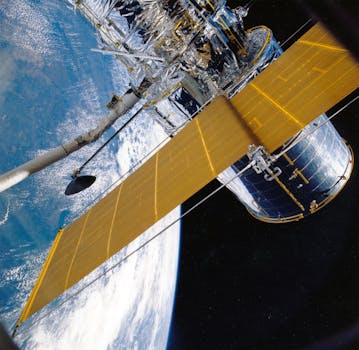From Geostationary to Low Earth Orbit: The Evolution of Satellite Telecommunications in 2023

From Geostationary to Low Earth Orbit: The Evolution of Satellite Telecommunications in 2023
From Geostationary to Low Earth Orbit: The Evolution of Satellite Telecommunications in 2023 has revolutionized the way we communicate and access information. The satellite telecommunications industry has undergone significant transformations in recent years, shifting from geostationary to low Earth orbit. This shift has brought about numerous benefits, including improved connectivity, increased bandwidth, and reduced latency. In this article, we will explore the evolution of satellite telecommunications in 2023, highlighting key developments, benefits, and challenges.
Introduction to Satellite Telecommunications
Satellite telecommunications have been around for decades, providing a means of communication for remote and underserved areas. Traditional satellite telecommunications rely on geostationary satellites, which orbit the Earth at an altitude of approximately 36,000 kilometers. These satellites have a fixed position in the sky and offer broad coverage, making them ideal for broadcasting and telecommunications. However, they have some limitations, such as high latency and limited bandwidth.
In recent years, the industry has shifted towards low Earth orbit (LEO) satellites, which orbit the Earth at an altitude of around 160-2,000 kilometers. LEO satellites have several advantages over geostationary satellites, including lower latency, higher bandwidth, and improved connectivity. This shift has enabled the development of new satellite telecommunications services, such as satellite internet and IoT connectivity.
Benefits of Low Earth Orbit Satellites
Low Earth orbit satellites offer several benefits over traditional geostationary satellites. One of the primary advantages is reduced latency. LEO satellites have a significantly lower latency than geostationary satellites, with latency as low as 20-30 milliseconds. This makes them ideal for real-time applications, such as video conferencing and online gaming.
Another benefit of LEO satellites is increased bandwidth. They offer higher bandwidth than geostationary satellites, making them suitable for applications that require high-speed data transfer, such as satellite internet and cloud computing. Additionally, LEO satellites have improved connectivity, with the ability to provide connectivity to remote and underserved areas.
LEO satellites also have a lower cost of deployment and maintenance compared to geostationary satellites. They are smaller and lighter, making them easier to launch and deploy. This has led to a decrease in the cost of satellite telecommunications services, making them more accessible to consumers and businesses.
Challenges and Future Developments
Despite the benefits of LEO satellites, there are still several challenges that need to be addressed. One of the primary challenges is the high cost of launching and deploying LEO satellites. Although the cost of deployment and maintenance is lower than geostationary satellites, the cost of launching a large constellation of LEO satellites can be significant.
Another challenge is the risk of space debris. The increased number of LEO satellites in orbit has raised concerns about the risk of space debris and collisions. This has led to a growing need for regulations and standards to ensure the safe and sustainable use of space.
In the future, we can expect to see further developments in satellite telecommunications, including the deployment of new constellations of LEO satellites and the development of new technologies, such as quantum communications and artificial intelligence. These advancements will enable the creation of new satellite telecommunications services, such as satellite-based 5G networks and IoT connectivity.
Conclusion
In conclusion, the evolution of satellite telecommunications from geostationary to low Earth orbit has revolutionized the way we communicate and access information. LEO satellites offer several benefits, including reduced latency, increased bandwidth, and improved connectivity. Although there are still challenges that need to be addressed, the future of satellite telecommunications looks promising, with new developments and technologies on the horizon.

